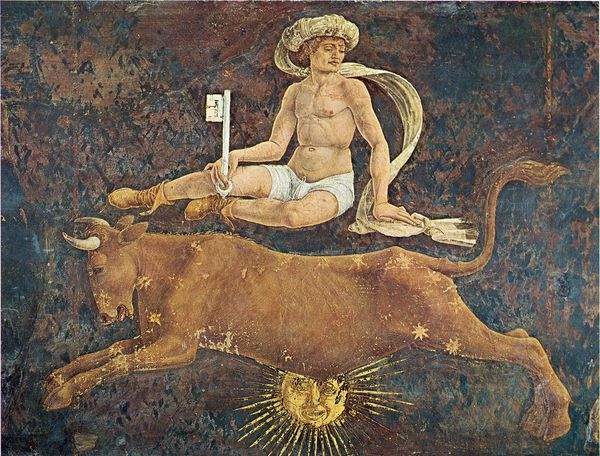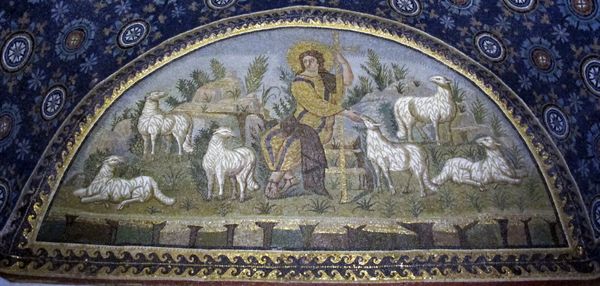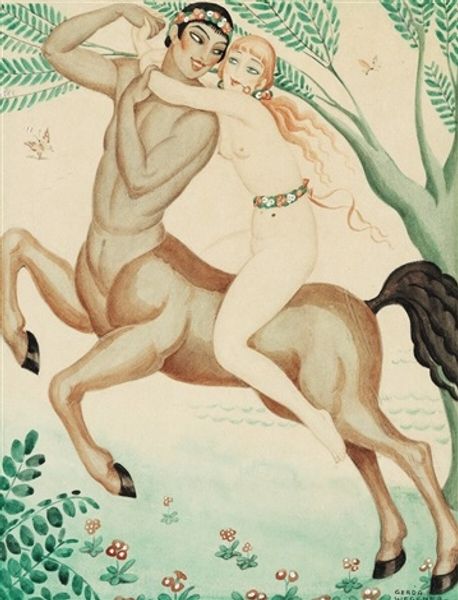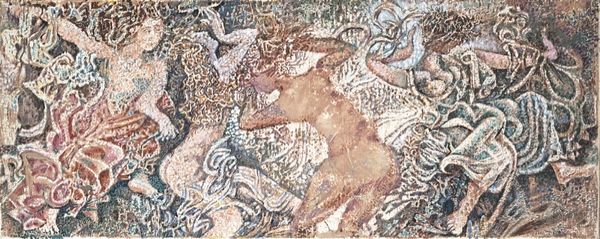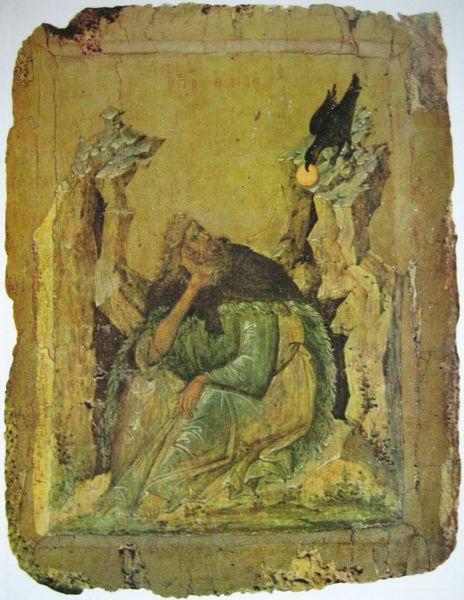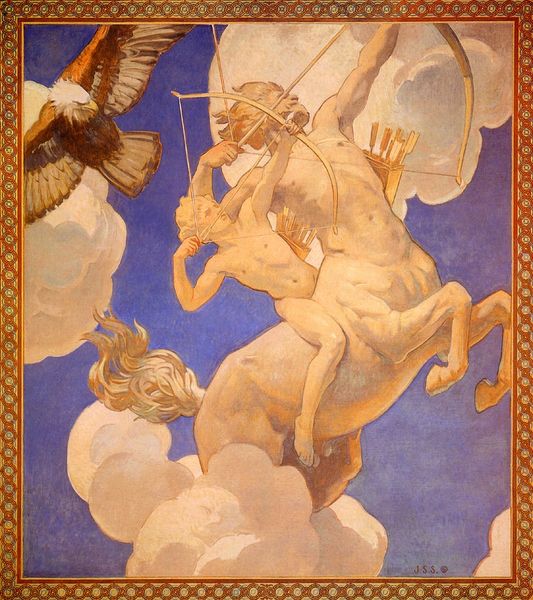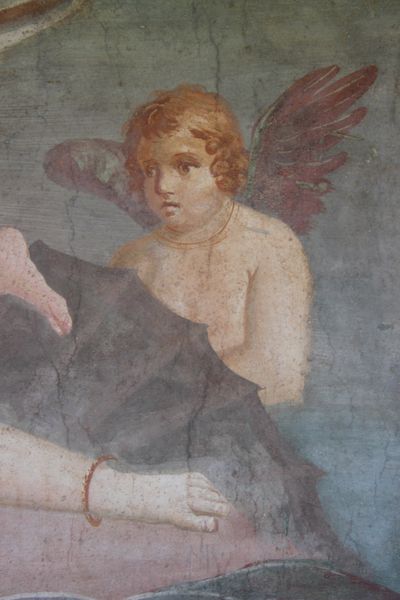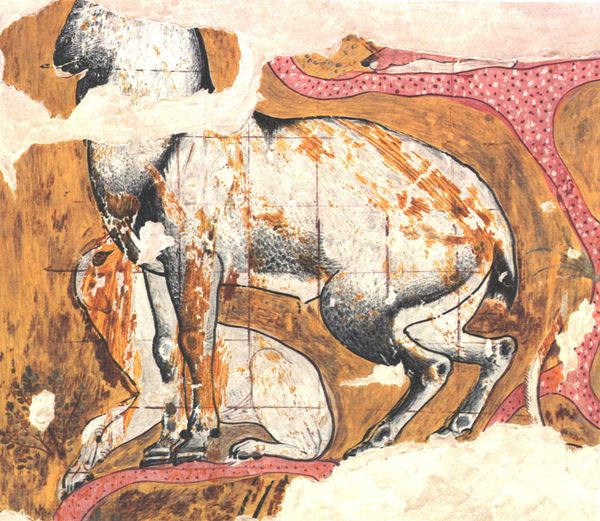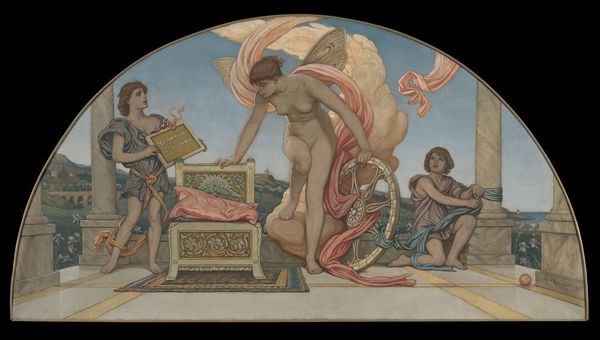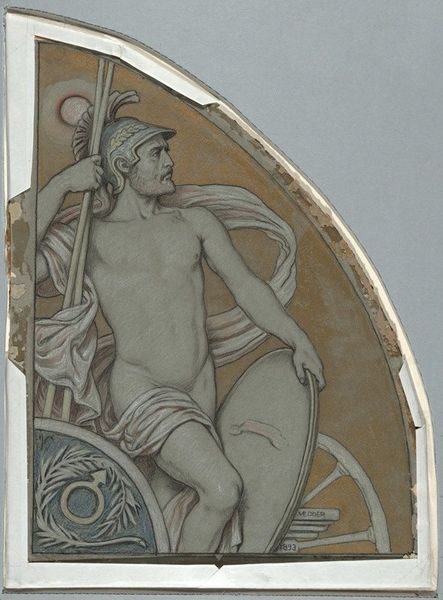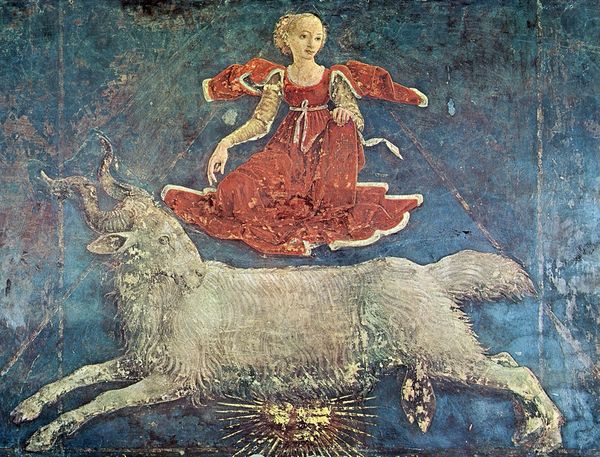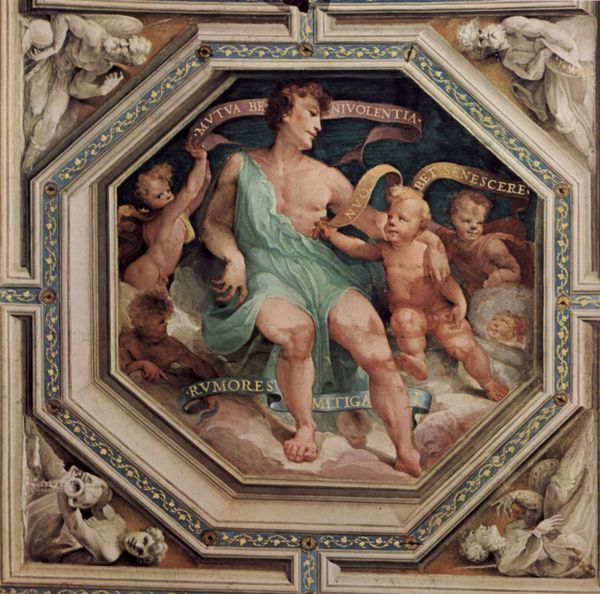
Allegory of March – Triumph of Minerva and Sign of Aries. Frescos in Palazzo Schifanoia (detail) 1470
0:00
0:00
fresco
#
allegory
#
figuration
#
fresco
#
oil painting
#
mythology
#
history-painting
#
italian-renaissance
Copyright: Public domain
Curator: Today, we’re looking at a section of "Allegory of March – Triumph of Minerva and Sign of Aries," a fresco detail by Francesco del Cossa, painted around 1470, found in Palazzo Schifanoia. Editor: My initial impression is one of muted triumph, if that makes sense. The figure seems victorious, but there's also a solemn quality to the color palette and the subject’s rather serious expression. Curator: Indeed. Del Cossa was commissioned by the ruling Este family to adorn the walls of their palace with depictions tied to the Zodiac signs and their impact on worldly affairs. This fresco uses figuration and mythological imagery, combining astrological symbolism with representations of courtly life and humanist ideals, very popular among elite circles at the time. Consider how material resources informed the painter's process; the cost of pigments, the logistics of working on such a large surface in fresco… these shaped the final composition. Editor: The way the light interacts with the form—observe the chiaroscuro—is quite striking. Del Cossa uses shadows to give depth and volume, emphasizing the muscles of the central figure and the flowing lines of the drapery, creating dynamism. There's a structural equilibrium as well, with the figure balanced between earthly and celestial attributes. Curator: Examining the materials employed in fresco technique illuminates the economic and social underpinnings of art production during the Renaissance. Each layer, from the rough plaster to the final pigment application, reflects a complex system of labor, patronage, and access to resources. The frescoes essentially served as courtly propaganda, using art to broadcast wealth, erudition, and power. Editor: It is about more than simple political messaging. Notice how Minerva is depicted riding triumphantly, bearing emblems of peace and war; Del Cossa's technique—particularly his sophisticated color work and meticulous detailing—encapsulates this message of strength in character and power through virtue, which is subtly woven into the painting. Curator: Looking closely at the pigments available during that era also tells us that these artworks would have represented the social aspirations and economic successes of the city-state that could afford them. Editor: Yes. Ultimately, though, del Cossa captures a fleeting moment, a suspended reality, of which he then asks us, across centuries, what we make of it. Curator: I'm struck again by the deliberate connection del Cossa drew between the heavens and earth—and what this means for how we read historical ideas of power, rulership, and art production itself.
Comments
No comments
Be the first to comment and join the conversation on the ultimate creative platform.
